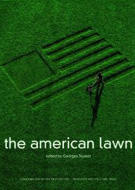 Like so many other aspects of modern life—the interstate highway system, fast food chains, telephones, televisions, and shopping malls—the lawn occupies a central, and often unconsidered, place in America's cultural landscape. In spaces as diverse as city parks, town squares, and suburban backyards, it has played an essential part in the development of our national identity. The site of political demonstrations, sporting events, and barbecues, and the object of loving, if not obsessive, care and attention, the lawn is also symbolically tied to our notions of community and civic responsibility, serving in the process as one of the foundations of democracy.
Like so many other aspects of modern life—the interstate highway system, fast food chains, telephones, televisions, and shopping malls—the lawn occupies a central, and often unconsidered, place in America's cultural landscape. In spaces as diverse as city parks, town squares, and suburban backyards, it has played an essential part in the development of our national identity. The site of political demonstrations, sporting events, and barbecues, and the object of loving, if not obsessive, care and attention, the lawn is also symbolically tied to our notions of community and civic responsibility, serving in the process as one of the foundations of democracy.Edited by Georges Teyssot, The American Lawn: Surface of Everyday Life (1999) examines the lawn within its historical, artistic, literary, and political contexts, situating it on the boundary between utopian ideal and dystopian nightmare.